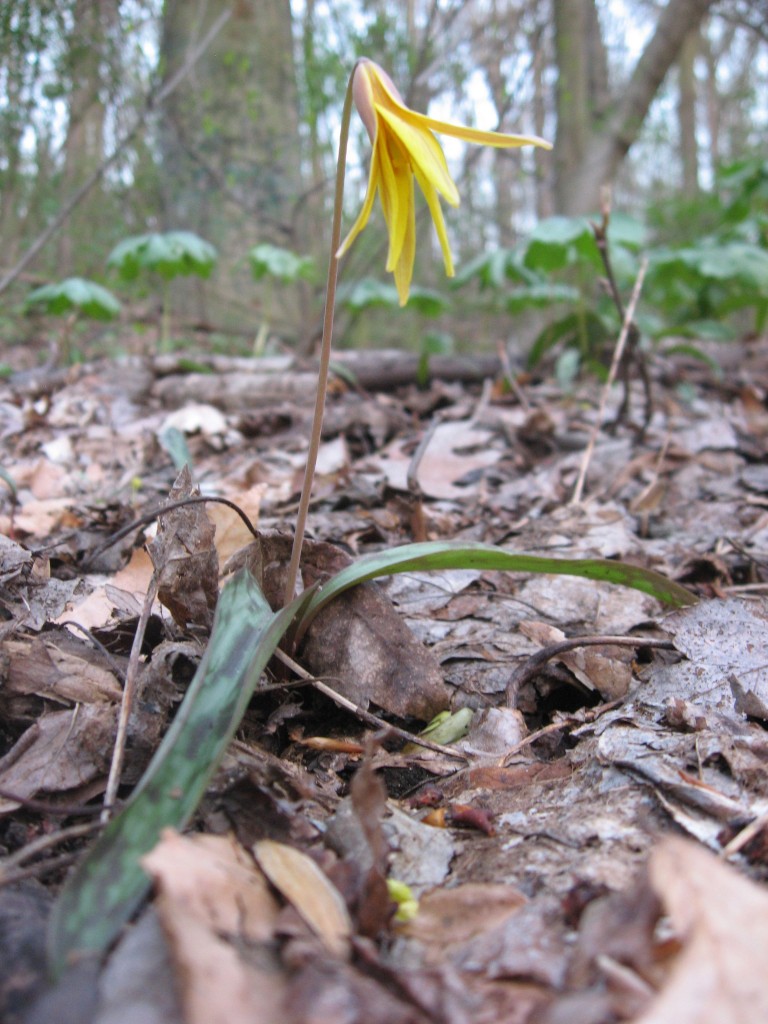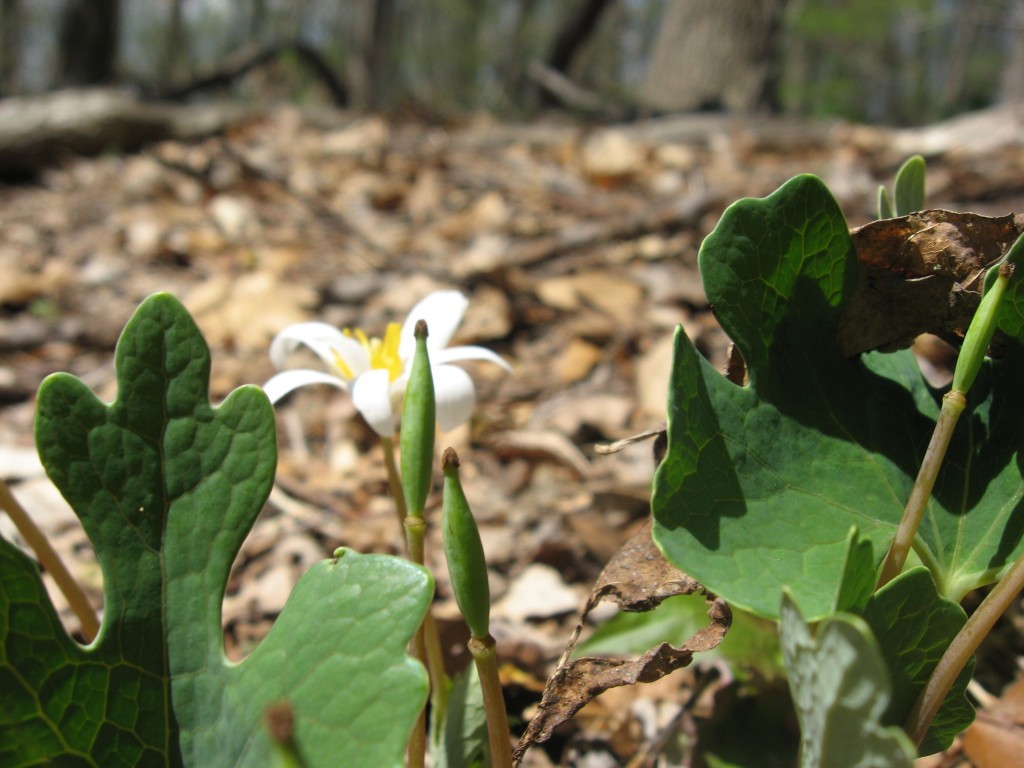SUNDAY APRIL 17TH, 2011, THE SANGUINE ROOT FINDS THE FIRST TROUT LILIES BLOOMING IN MORRIS PARK.

Erythronium americanum
For the past two weeks we had been observing the beautiful multi-colored leaves emerge from the earth. Â A bluish-green and maroon spotted leaf. Â Today we found it in bloom. Â We love these native plants for their beauty, and their established place in Morris Park. They are wide-spread on the slopes of the ravine, and they hold the soils in place. Â We are still in the process of discovery of Erythronium americanum, seeing where it grows, when it flowers and sets seed, its dormancy and its neighboring species. Â Look for this flower in your Ravine, and you hopefully will find it.

This photograph taken this morning, April 17, 2011 is one of the last flowers of Bloodroot to bloom.  That would be so far 29 consecutive days of blooming Bloodroot in Morris Park.  The next big events with Sanguinaria canadensis is seed production and leaf growth.  Once the energy-draining task of seed-production is completed, the leathery lobed leaf will remain, possibly into the early  to middle fall, performing the photosynthesis needed to grow the roots, expand the colony, and store the needed energy to send up a flower next spring, and generate seed.
We will keep you updated on the success and failure of the upcoming seed production phase of Bloodroot. However, we must comment on what we perceive to be a successful flowering stage of the general population of this species.  While some localized populations were decimated by grazing Deer, most of them were able to make it to seed production.  We also monitored  closely pollination in many local populations. We found bees and flies consistently visiting 5 distinct populations of bloodroot during their flowering periods, which lasted  10 days for the larger populations of 25 or more flowers and around 5 days for the smaller populations of 10 flowers or less.  This highly variable species will have specific specimens within a population bloom at  a widely spaced time frame, most likely to have the best advantage of pollination. This species is also able to self-pollinate, so if there is a problem with cross pollination between populations, fertile seed can still be set within a population.
However, from observing the plants flowering habits, we have concluded that cross-pollination between distinct populations is the ‘desired ‘outcome.
There are many varieties of flowers within less than an acre’s space here in Morris Park. Some flowers have a double-petaled form, while just feet away, there will be a population with just half of the petals, yet these petals will be long and elaborate, curving up or down at the tips. This plant is so highly variable because it is genetically  programmed for success in the long run.  Diversity in its genetic code is a primary necessity in long term survival.  This is where the bees and flies come in, the pollinators.  They insure that the pollen from one specific population is introduced and fertilizes another population.  Both of these populations have co-existed for thousands , perhaps millions of years, and most likely have exchanged genetic material (pollen) and have survived in the same or similar geographic area. However, what does it take for a general population of any species to survive thousands and millions of years of changing conditions?
From watching the Bloodroot in our area just the past 4 years has given us a glimpse into the complexities and subtleties of  the survival mechanisms and strategies of this plant.  How will this plant weather the next 25 years, 50 years, 200 years, 500, or 2000 years of survival right here in its natural environment in what we call today Morris Park?


